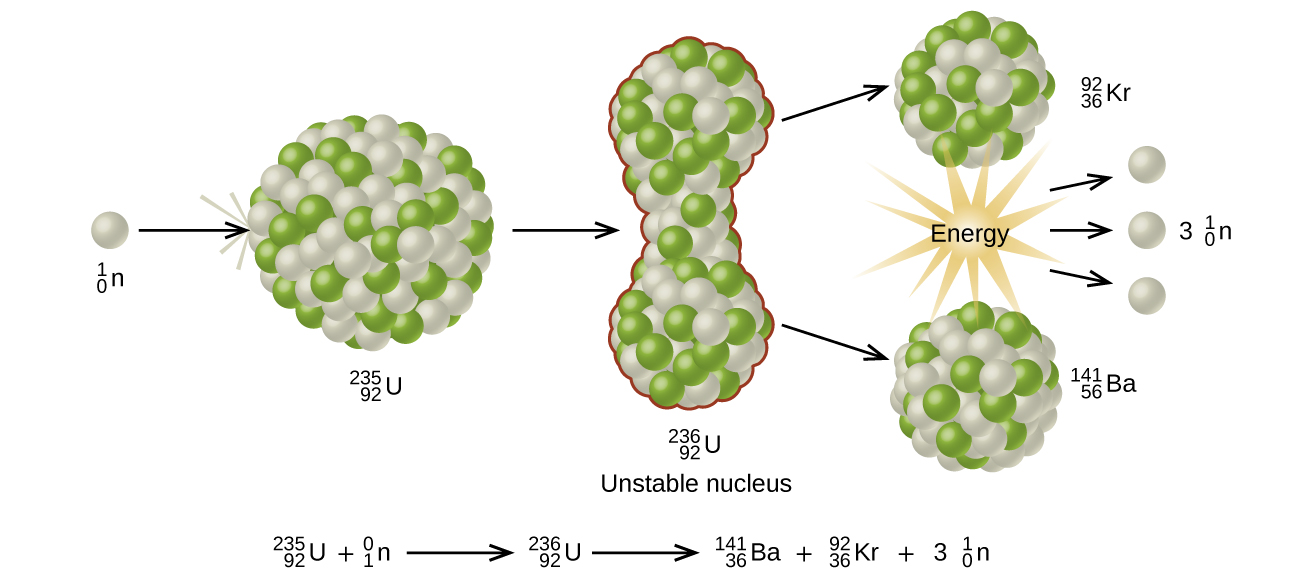| << Chapter < Page | Chapter >> Page > |

Among the products of Meitner, Hahn, and Strassman’s fission reaction were barium, krypton, lanthanum, and cerium, all of which have nuclei that are more stable than uranium-235. Since then, hundreds of different isotopes have been observed among the products of fissionable substances. A few of the many reactions that occur for U-235, and a graph showing the distribution of its fission products and their yields, are shown in [link] . Similar fission reactions have been observed with other uranium isotopes, as well as with a variety of other isotopes such as those of plutonium.

View this link to see a simulation of nuclear fission.
A tremendous amount of energy is produced by the fission of heavy elements. For instance, when one mole of U-235 undergoes fission, the products weigh about 0.2 grams less than the reactants; this “lost” mass is converted into a very large amount of energy, about 1.8 10 10 kJ per mole of U-235. Nuclear fission reactions produce incredibly large amounts of energy compared to chemical reactions. The fission of 1 kilogram of uranium-235, for example, produces about 2.5 million times as much energy as is produced by burning 1 kilogram of coal.
As described earlier, when undergoing fission U-235 produces two “medium-sized” nuclei, and two or three neutrons. These neutrons may then cause the fission of other uranium-235 atoms, which in turn provide more neutrons that can cause fission of even more nuclei, and so on. If this occurs, we have a nuclear chain reaction (see [link] ). On the other hand, if too many neutrons escape the bulk material without interacting with a nucleus, then no chain reaction will occur.

Material that can sustain a nuclear fission chain reaction is said to be fissile or fissionable . (Technically, fissile material can undergo fission with neutrons of any energy, whereas fissionable material requires high-energy neutrons.) Nuclear fission becomes self-sustaining when the number of neutrons produced by fission equals or exceeds the number of neutrons absorbed by splitting nuclei plus the number that escape into the surroundings. The amount of a fissionable material that will support a self-sustaining chain reaction is a critical mass . An amount of fissionable material that cannot sustain a chain reaction is a subcritical mass . An amount of material in which there is an increasing rate of fission is known as a supercritical mass . The critical mass depends on the type of material: its purity, the temperature, the shape of the sample, and how the neutron reactions are controlled ( [link] ).

Notification Switch
Would you like to follow the 'Chemistry' conversation and receive update notifications?